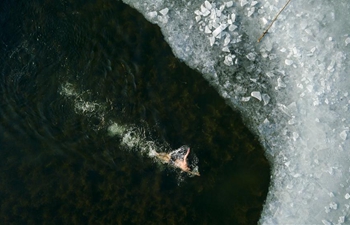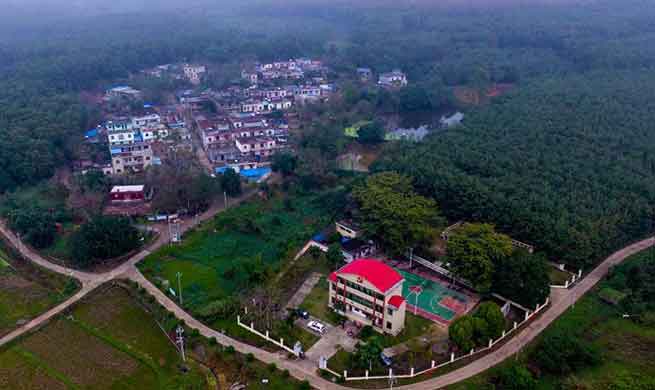LIMA, Feb. 1 (Xinhua) -- Peruvians have been outraged after seeing an online video footage, which has recently gone viral, in which a truck plows over the world-renowned Nazca Lines, leaving deep tire prints and damaging the UNESCO World Heritage site.
Allegedly ignoring the warning signs, 40-year-old driver Jainer Jesus Flores Vigo drove his vehicle into the historic zone in the country's southern coastal desert Saturday, rolling over a 50-meter by 100-meter area and damaging three geoglyphs at the archeological site, according to a press release by Peru's Ministry of Culture.
As a video clip recorded by a passer-by soon went viral online and enraged the public, security guards detained Vigo and reported the incident to the local police station. Vigo was released Monday due to a lack of evidence that he did it with intent, according to Peru's Attorney General Office.
Created between 500 BC and 500 AD by the ancient Nazca people, the geoglyphs and lines are meticulously drawn on the delicate sandy surface covering more than 700 square km, either in simple geometric forms or depicting animals, plants and other imaginary creatures.
Ever since American historian Paul Kosok's study first brought the ancient wonder to public awareness in the early 1940s, the mystery behind the gigantic etchings -- so huge that its full image can only be identified through a bird's eye view -- has been an endless source of intrigue for archeologists.
Following Kosok, who called the relic "the largest astronomy book in the world," researchers have been trying to decode the implications of the drawings, proposing hypotheses purporting that they serve ritual astronomical and calendrical purposes, or that they are part of an ancient irrigation system indicating the direction toward water sources.
UNESCO declared the Lines and Geoglyphs of Nazca and Pampas de Jumana a World Heritage Site in 1994, calling them one of "archeology's greatest enigmas."
Although trespass onto the site is prohibited, Jonny Isla, spokesman of the Ica branch of Peru's Ministry of Culture, said "entry and transit are possible through valleys and streams where the archeological area spreads out," adding other damaging behaviors, such as leaving trash in the area, had also been caught before.
The most severe damage to the lines happened in December 2014, when Greenpeace activists set up large demonstration letters beside one of the ancient designs known as the Hummingbird. Peru was hosting a United Nations meeting on curbing global warming at the time.
Authorities vowed to strengthen protection of the historical treasure and prevent Saturday's incident from happening again. They were planning to increase surveillance facilities around the area, Peru's state-run Andina news agency reported.

















